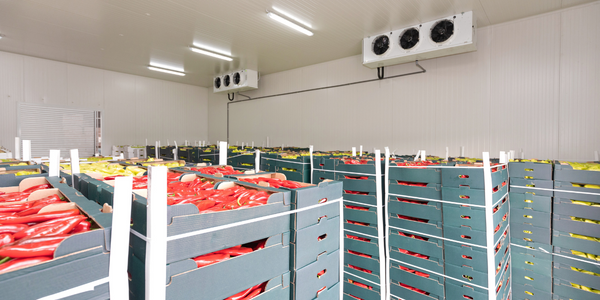Technology Category
- Analytics & Modeling - Digital Twin / Simulation
- Platform as a Service (PaaS) - Application Development Platforms
Applicable Industries
- Electrical Grids
- Transportation
Applicable Functions
- Product Research & Development
- Quality Assurance
Use Cases
- Virtual Prototyping & Product Testing
- Virtual Reality
Services
- System Integration
- Testing & Certification
About The Customer
Nufront is a Chinese technology company that develops systems and solutions in the areas of wireless broadband communication and broadcasting, integrated circuit (IC) design, video search, digital-image processing, intelligent transportation, and digital medical. The company expands its reach and capabilities beyond its own research and development (R&D) team by collaborating with industry-leading companies, universities, and academic institutes based in China. An innovative company, Nufront has been issued approximately 200 patents in the areas of mobile multimedia, wireless broadband, smart central processing unit (CPU) design, video search, and digital-image technology for counterfeit identification and authentication.
The Challenge
Nufront, a Chinese technology company, was tasked with the challenge of developing its third-generation mobile computing chip, the NS115, based on the ARM® Cortex™-A9 dual-core processor. The company had to adhere to strict mobile-computing platform requirements, achieve extremely low levels of power consumption, and ensure a high level of performance. The design team’s challenge was to verify and emulate the chip with a focus on performance and power with Android applications. The NS115 required a complex design with 12 million (12M) gates and had to meet Android system requirements, including the need for external storage, multiple screen displays, the ability to accept data input from various sources, and a long lead-time for IC simulation. The Nufront team felt that register-transfer level (RTL) simulation would be too slow for system-level verification, and frequent design iterations and the lack of full debug visibility wasn’t suitable to choose a field-programmable gate array (FPGA)-based solution.
The Solution
Nufront chose the Cadence® Palladium® XP Verification Computing Platform to emulate the NS115, enabling early system-level integration and software validation for Android and Linux while speeding time to delivery and enhancing overall quality. The Palladium XP platform integrates with Cadence Incisive® Enterprise Manager to support a metric-driven flow that accelerates verification. Nufront engineers were able to use a common verification plan and extract constraint results from multiple locations into a common database for metric analysis. The Nufront team relied upon Palladium XP for system-level power analysis and power verification. Palladium XP Dynamic Power Analysis enabled them to quickly identify peak and average power of their system-on-chip (SoC) with deep software cycles. During the runs, they identified and zoomed into power peaks with finer granularity to identify the high power consumers in the design. This helped them reduce overall power consumption. The Cadence solution also allows the reuse of abstracted models such as C/C++, transaction-level models, behavioral RTL, RTL/ gate-level netlist, silicon/FPGA/software IP, and system-level interfaces.
Operational Impact
Quantitative Benefit

Case Study missing?
Start adding your own!
Register with your work email and create a new case study profile for your business.
Related Case Studies.

Case Study
Airport SCADA Systems Improve Service Levels
Modern airports are one of the busiest environments on Earth and rely on process automation equipment to ensure service operators achieve their KPIs. Increasingly airport SCADA systems are being used to control all aspects of the operation and associated facilities. This is because unplanned system downtime can cost dearly, both in terms of reduced revenues and the associated loss of customer satisfaction due to inevitable travel inconvenience and disruption.

Case Study
IoT-based Fleet Intelligence Innovation
Speed to market is precious for DRVR, a rapidly growing start-up company. With a business model dependent on reliable mobile data, managers were spending their lives trying to negotiate data roaming deals with mobile network operators in different countries. And, even then, service quality was a constant concern.

Case Study
Digitize Railway with Deutsche Bahn
To reduce maintenance costs and delay-causing failures for Deutsche Bahn. They need manual measurements by a position measurement system based on custom-made MEMS sensor clusters, which allow autonomous and continuous monitoring with wireless data transmission and long battery. They were looking for data pre-processing solution in the sensor and machine learning algorithms in the cloud so as to detect critical wear.

Case Study
Cold Chain Transportation and Refrigerated Fleet Management System
1) Create a digital connected transportation solution to retrofit cold chain trailers with real-time tracking and controls. 2) Prevent multi-million dollar losses due to theft or spoilage. 3) Deliver a digital chain-of-custody solution for door to door load monitoring and security. 4) Provide a trusted multi-fleet solution in a single application with granular data and access controls.

Case Study
Vehicle Fleet Analytics
Organizations frequently implement a maintenance strategy for their fleets of vehicles using a combination of time and usage based maintenance schedules. While effective as a whole, time and usage based schedules do not take into account driving patterns, environmental factors, and sensors currently deployed within the vehicle measuring crank voltage, ignition voltage, and acceleration, all of which have a significant influence on the overall health of the vehicle.In a typical fleet, a large percentage of road calls are related to electrical failure, with battery failure being a common cause. Battery failures result in unmet service agreement levels and costly re-adjustment of scheduled to provide replacement vehicles. To reduce the impact of unplanned maintenance, the transportation logistics company was interested in a trial of C3 Vehicle Fleet Analytics.

Case Study
3M Gains Real-Time Insight with Cloud Solution
The company has a long track record of innovative technology solutions. For example, 3M helps its customers optimize parking operations by automating fee collection and other processes. To improve support for this rapidly expanding segment, 3M needed to automate its own data collection and reporting. The company had recently purchased the assets of parking, tolling, and automatic license plate reader businesses, and required better insight into these acquisitions. Chad Reed, Global Business Manager for 3M Parking Systems, says, “With thousands of installations across the world, we couldn’t keep track of our software and hardware deployments, which made it difficult to understand our market penetration.” 3M wanted a tracking application that sales staff could use to get real-time information about the type and location of 3M products in parking lots and garages. So that it could be used on-site with potential customers, the solution would have to provide access to data anytime, anywhere, and from an array of mobile devices. Jason Fox, Mobile Application Architect at 3M, upped the ante by volunteering to deliver the new app in one weekend. For Fox and his team, these requirements meant turning to the cloud instead of an on-premises datacenter. “My first thought was to go directly to the cloud because we needed to provide access not only to our salespeople, but to resellers who didn’t have access to our internal network,” says Fox. “The cloud just seemed like a logical choice.”







